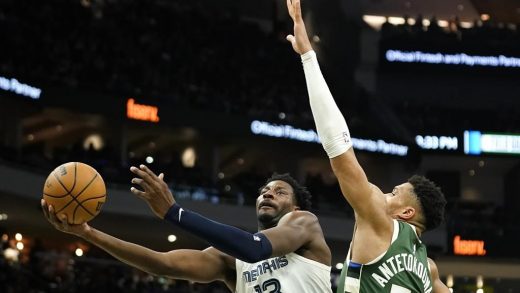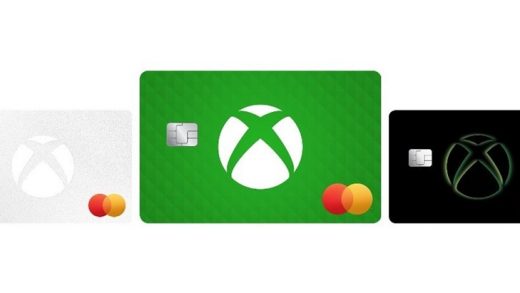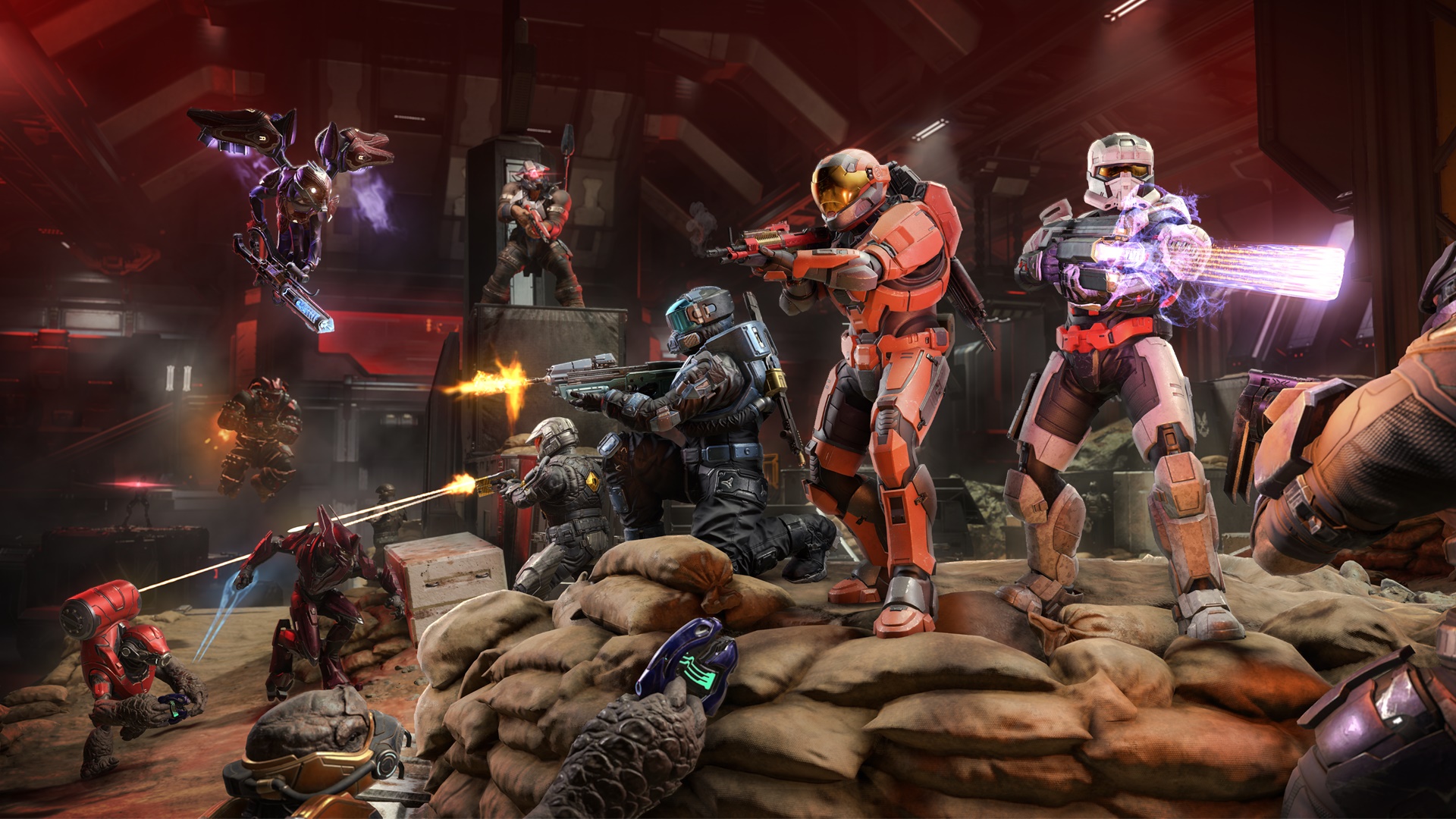
Bip. Bap. Bam. Welcome to Firefight in Halo Infinite!
With the December Update dropping on December 5, the latest incarnation of Firefight will arrive in Halo Infinite—Firefight: King of the Hill.
Before we dive into the details, let’s take a quick look back at the long history of Firefight, all the way back to its origins…
FIREFIGHT: A BRIEF HISTORY
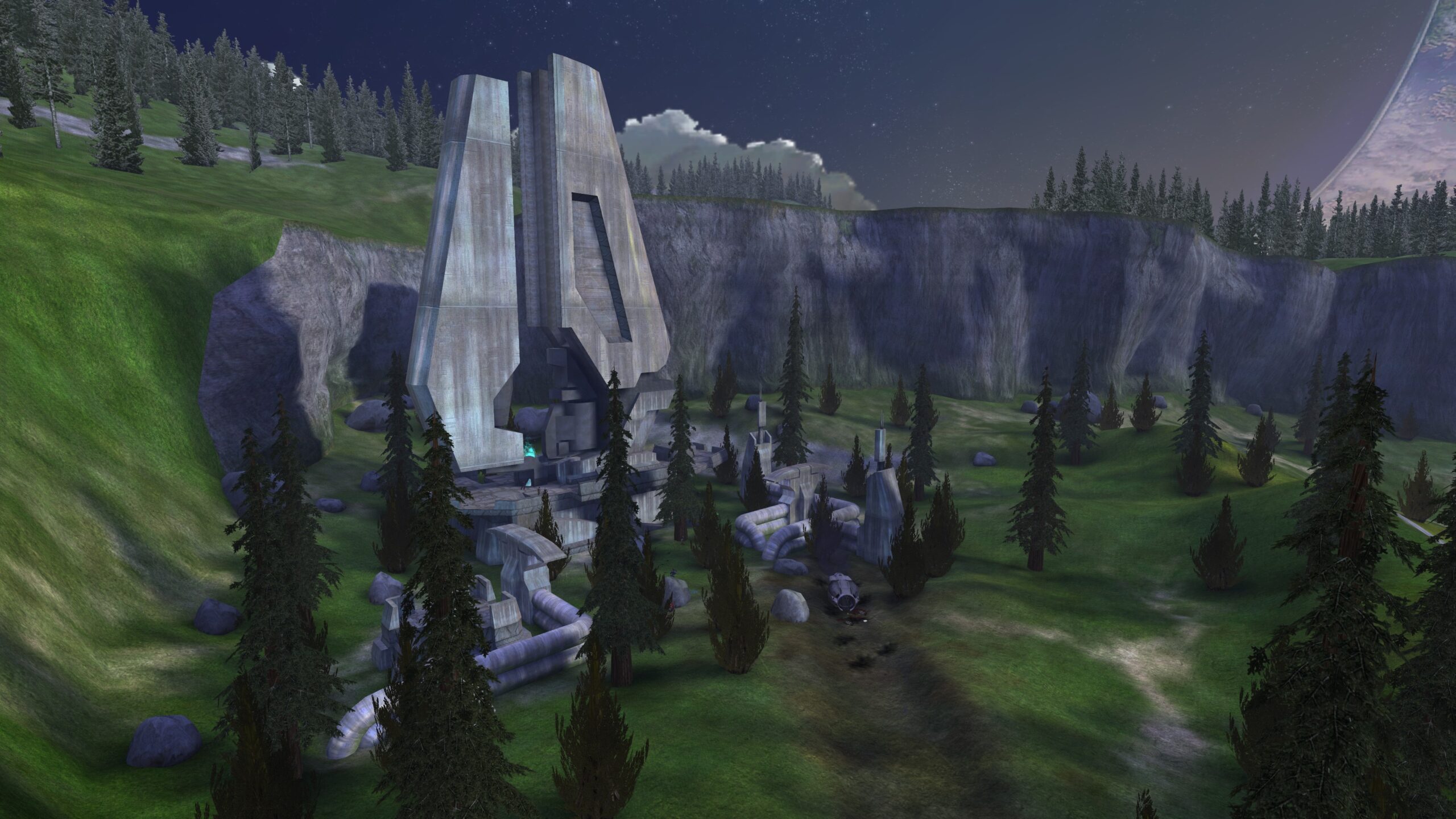
“It’s a mess, sir,” Staff Sergeant Avery Johnson said. “We’re scattered all over this valley. We called for evac, but until you showed up, I thought we were cooked.”
“Don’t worry, Sergeant,” Cortana replied. “We’ll stay here until evac arrives.”
The Master Chief looked up at the strange alien tower that was currently serving as a rally point for this group of Marine survivors who had made it off the UNSC Pillar of Autumn. There were only a handful of them, ammunition was low, and—as Private Mendoza’s voice came over the comm—it was clear that they were out of time.
“Heads up! I got a Covenant dropship headin’ in, over here!”
The conceptual origins of Firefight in Halo can perhaps be traced back to this very moment, near the start of the second mission in Halo: Combat Evolved. After coming across a group of Marine survivors, you must protect them from waves of Covenant reinforcements before they can be picked up by Foehammer.
Firefight itself would debut in 2009’s Halo 3: ODST as a cooperative mode where you and up to three of your friends could put your skills to the ultimate test, experiencing Halo sandbox encounters in the form of a survival-based “horde mode” that was becoming increasingly popular in games around this time. No doubt, many of you reading this today will recall the late nights spent on the Alpha Site map attempting to get the Vidmaster: Endure achievement as you sought to complete your Road to Recon…
From there, Firefight would go on to take several different forms in subsequent Halo games. In Halo: Reach, players were given extensive customization options to edit many aspects of the experience, which was also available in matchmaking.
In Halo 5, Warzone Firefight was introduced as a pure PvE version of the new PvPvE Warzone mode. Eight players could come together on large-scale maps to unleash their most powerful weapons and vehicles against Covenant and Promethean enemies.
And then, Halo Wars 2 introduced Blitz Firefight and Terminus Firefight. In the former, players had to defend and control three zones from waves of UNSC and Banished forces; the latter, meanwhile, was more of a “tower defense”-type experience where up to three players could work together to defend their bases and a Forerunner tower, with Flood enemies added into the mix.
And so, the time has come for a new Firefight experience in Halo Infinite…
FIREFIGHT: KING OF THE HILL
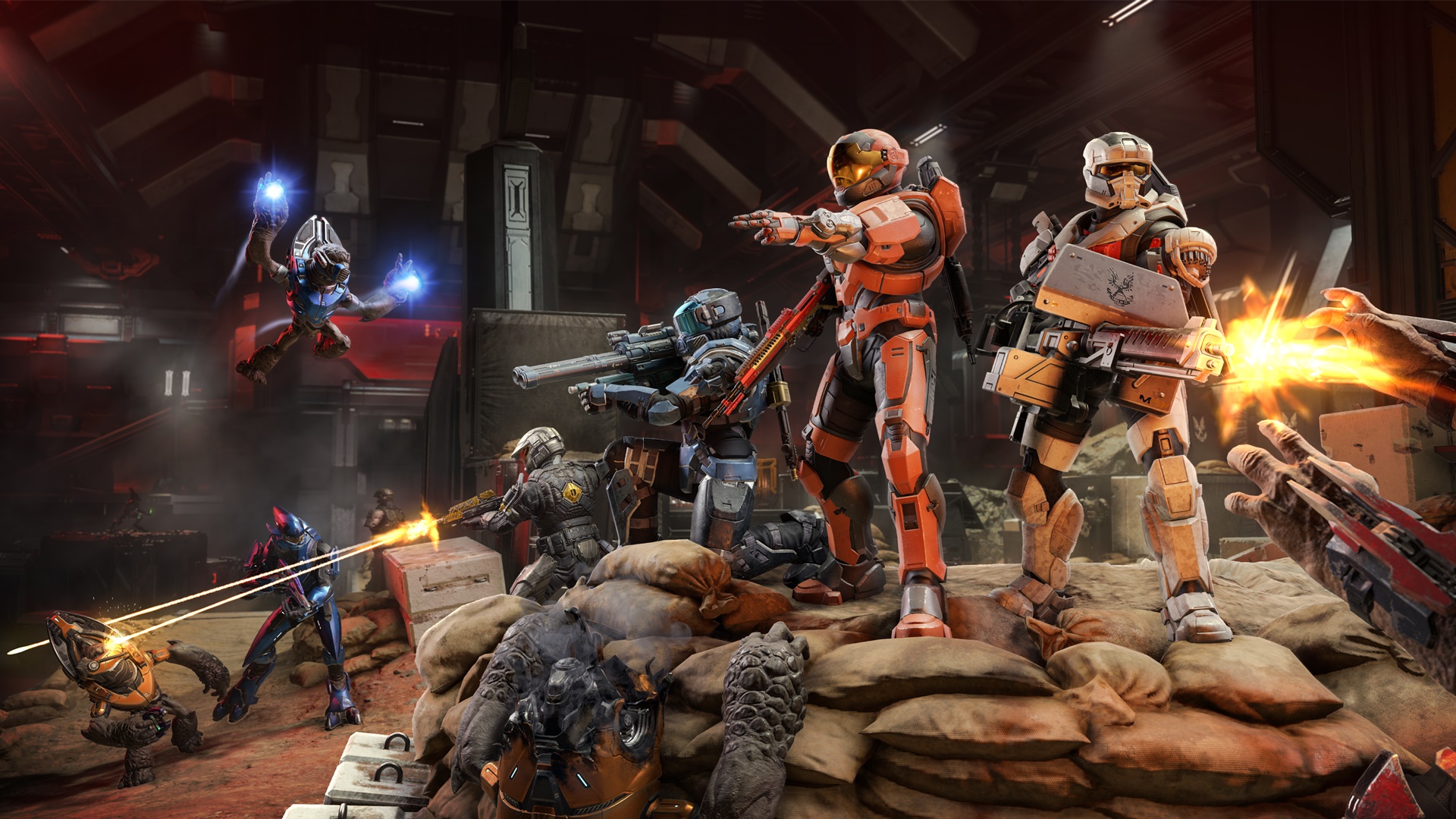
To delve deeper into this new incarnation of Firefight, we’re joined by Connor Kennelly, Technical Designer, for a Q&A breakdown.
What is Firefight: King of the Hill and how does it work?
Our take on Firefight is in many ways close to the previous iterations of Firefight you remember. You and three other Spartans will face waves of Banished foes until you prevail… or die trying. The experience is entirely PvE, so there are no other human players to sweat against—just you, your fireteam, and Halo Infinite’s awesome cast of campaign enemies.
When the game starts, a hill will spawn, and waves of progressively harder Banished enemies will try to capture that hill. Your job is to take the hill from them and hold it until you capture it. A Boss Wave, filled with tougher than usual enemies (and spearheaded by a named High Value Target or Boss), spawns once you’ve reached a certain amount of hill progress.
You score a point when you both finish capturing the hill AND defeat the Boss Wave. Then, just like in other Firefight iterations, you’ll get a brief respite to resupply your weapons and equipment, which only respawn in between hills. After that downtime, the hill will begin spawning in a new location, and the cycle repeats.
The Matchmaking modes will have exactly five hills for each match, and you’ll get a win if you capture at least three of them throughout the round.
The timer in the mode is technically unlimited, but games tend to run between fifteen-to-twenty minutes depending on how well your team is playing. We totally expect the speedrun-oriented folks to be competing for lowest time for each map, though.
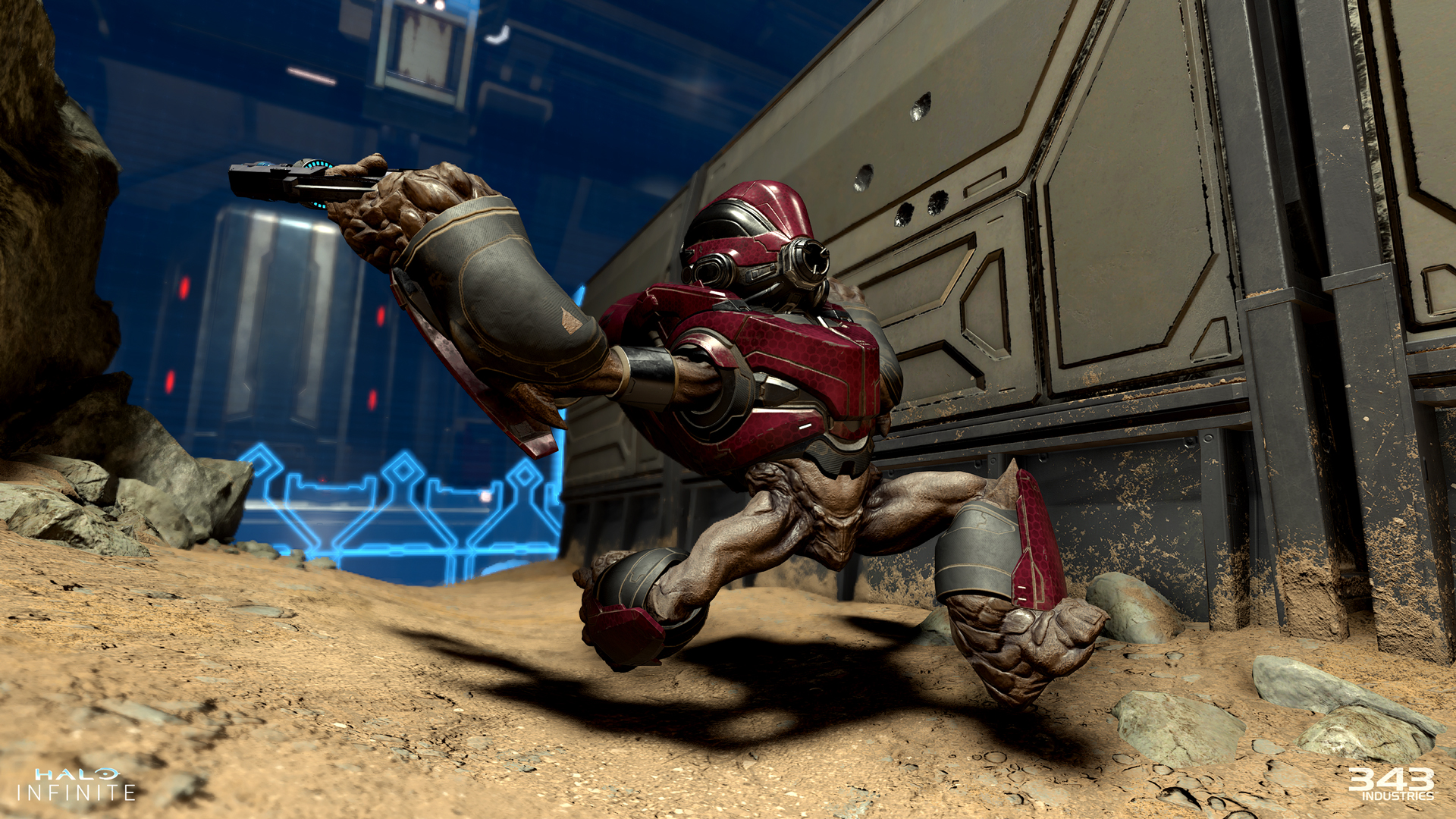
So you get points by capturing each hill and defeating its Boss Wave. And it takes 5 points to win. How do you lose?
Well, the enemy team can capture the hill just like you can, so if you can’t hold the waves off, you can lose the point to the other team. And since there’s a fixed number of hills to play, you don’t want to lose that bonus XP, so don’t let them capture those hills!
Also, just like in previous Firefight iterations, death can wipe out your squad. More on that in a minute, but keeping everyone alive is very much a focus of this mode.
In past Firefight modes, players have limited respawns. How do respawns work in Firefight KOTH?
The matchmade version of Firefight: King of the Hill will NOT be using a pool of lives. When designing this mode, we read a lot of community posts on old Firefight iterations, and we saw a common frustration with matchmade experiences where players felt that matchmade teammates often “wasted” the team lives. To address this, we brought in an elimination mechanic instead. When a teammate is killed, they go down where they fell and are given a lengthy respawn timer—the duration depends on the difficulty you are playing. And if ALL the Spartans go down simultaneously, you’ll instantly lose the game.
Your teammates can bring you back to the battlefield immediately by reviving you, just like in Attrition, but as mentioned above, the Banished will be making hill progress the whole time… so you’re going to need to balance revives against the enemy capture progress.
The tension between going for a revive or contesting the hill has made for some of the most delicious moments in our internal playtests, especially on the Heroic difficulty where the respawn time is longer. Do you play it safe and give up some enemy hill progress to bring your teammates back, or does your Last Spartan Standing try to contest a Banished-owned hill alone and risk the entire game? I guess it depends on how greedy heroic you feel…
We hope utilizing revives will reduce frustration for the players that want to solo-queue but will keep the co-op sense of shared fate we loved in both survival Firefight and Warzone Firefight.
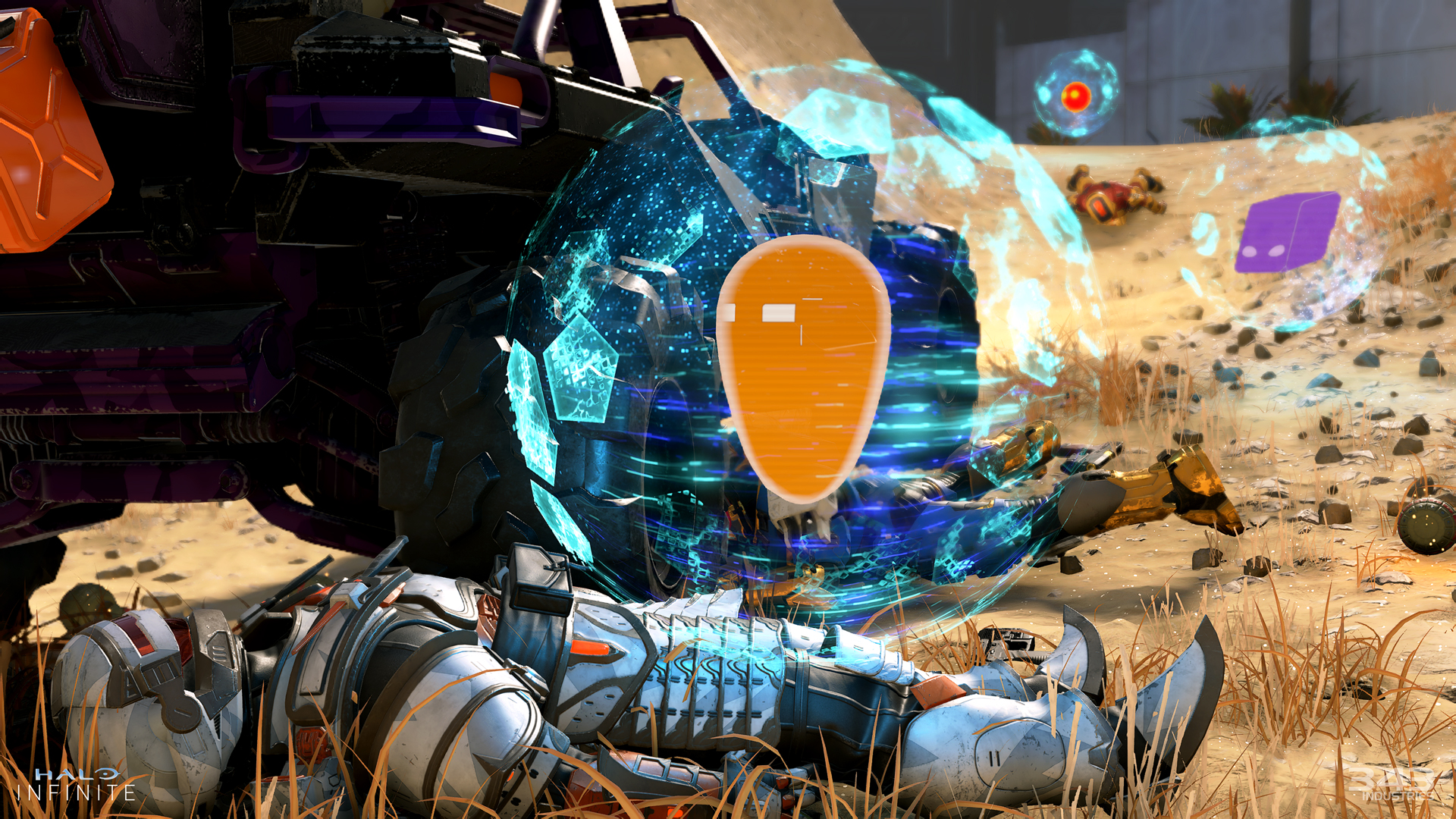
One last thing on the death mechanics here: since this pain point was mostly a matchmaking concern, we added Custom Game options that will let you use the traditional lifepool. We also have a separate option to turn off revives, so if your lobby wants classic mechanics or you just love roasting your buddies for wasting lives, we’ve got you covered! Because we do not have lives in the matchmade version, we do not have the old Bonus Rounds to earn extra lives. However, we think replenishing the lifepool is a vital mechanic for those endless runs like in ODST and Reach, so we have another Custom Game option that will let you replenish the shared lifepool if the Spartans win the point.
Season 5 is all about letting people play Halo the way they want to play, and we’ve tried to support that as best we can.
Why Firefight: King of the Hill instead of a new iteration of specifically survival-based Firefight?
“Firefight” encompasses a lot. Firefight is about surviving waves of enemies with your friends. It’s about tracking who’s alive and who’s dead. It’s about managing limited resources. It’s about Skulls ratcheting up the difficulty as rounds progress.
And, at the core of it, Firefight is about having your back up against the wall and coming out on top through teamwork.
So, when we wanted to bring that back-against-the-wall feeling to Infinite, we landed on the King of the Hill mechanic. The hill started out as a way to organize combat on big maps. It provided that “wall” your team put their back up against when the maps were particularly large. Plus, it brought the added bonus of letting us move that spot around the map so the experience was more varied within each game.
That was just our starting point. As with everything in game development, you learn a lot as you playtest. And sure enough, as we spent more time with the hill mechanic, we realized it was adding an unexpected dynamic to the experience. Players who ran and hid when a tough wave of enemies appeared couldn’t stay hidden and pick shots at enemies until they had thinned their ranks—since they couldn’t progress the mode without having at least one player occupy the hill, the Spartans had to band together to retake the point and begin scoring again.
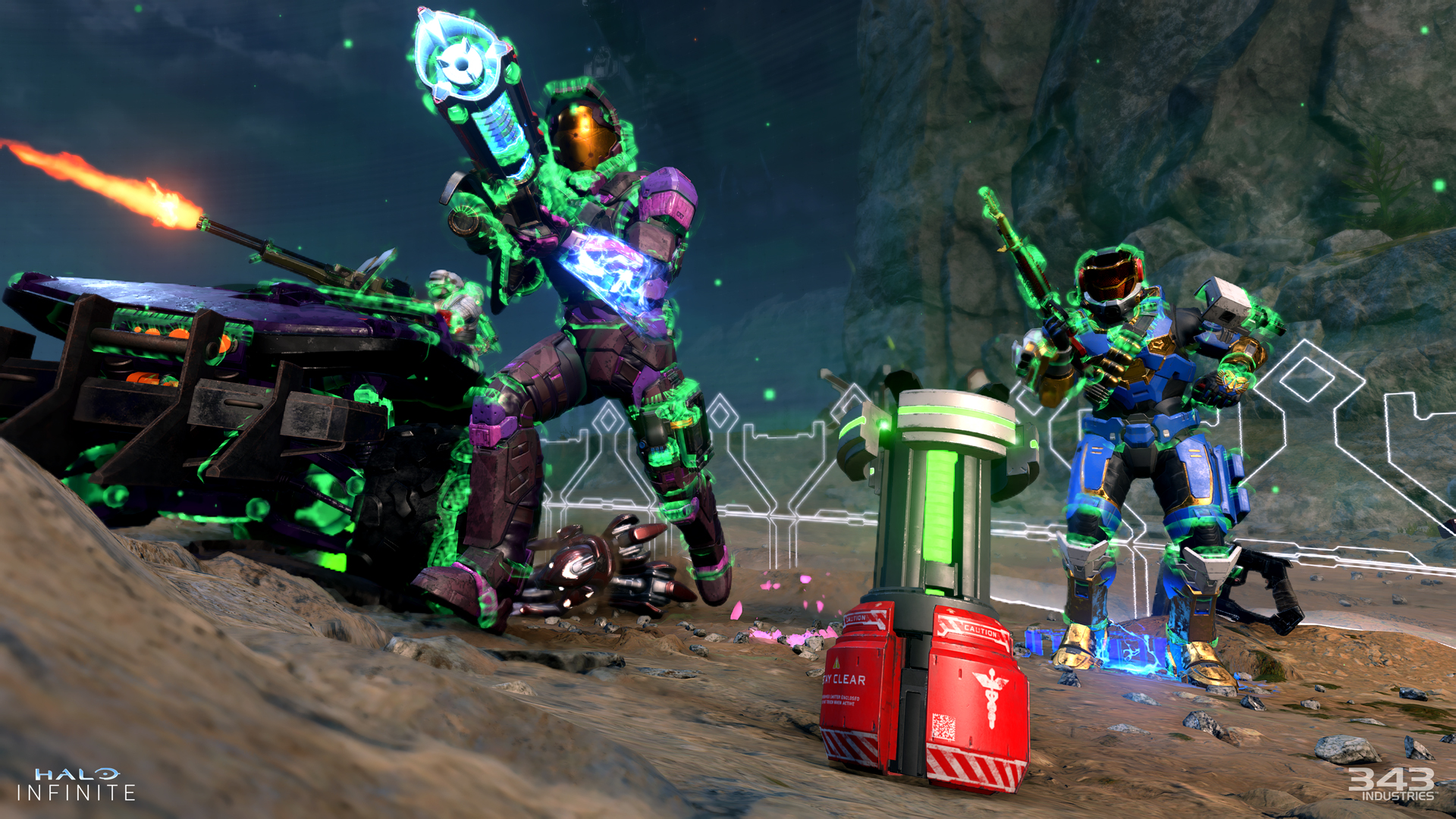
We really enjoyed “the flip” between attacking and defending that emerged from this dynamic, and we also enjoyed the additional cooperative moments this created. Some of the most fun we’ve had in past Firefight modes are when you’re completely overrun by the AI and have to scramble, and concentrating the AI squads in a way that demanded extra fireteam cooperation really seemed to enhance those moments.
Where it really started getting good was when we extended the hill code to let AI units capture them. Suddenly, there was tension when the enemy pushed your fireteam off the hill. The bar started ticking up. That drum sound played with each tick, letting you know the Banished were inching closer to victory. Your decisions were now constrained by time. Is pathing back to that rocket launcher you saw across the map worth the tradeoff on the enemy hill progress? Can you afford to let your shields come back up before contesting, or do you need to get in there now and buy time for your other teammates to arrive?
Even in the course of regular combat, when the Spartans have control over the field, the hill shapes how you play. Because a single enemy AI can contest the hill and halt your progress, the fireteam needs to work together to keep the zone clear to draw the Boss Wave out. We indexed into larger hill volumes on each map so that there are multiple fronts to defend. Coordinating with your team to sweep the firing lanes, rotating from one sight line to another as you cover a friendly revive, choosing when to send players out of the hill to return with a power weapon or snipe from a vantage point—these are some examples of the core decisions you’ll be making when you match into a game Firefight: KOTH.
To make a long story short: we love the extra decision-making, the additional cooperative elements, and the tension that the hill brings to the classic Firefight formula. We can’t wait to hear what you think when you jump into the mode tomorrow!
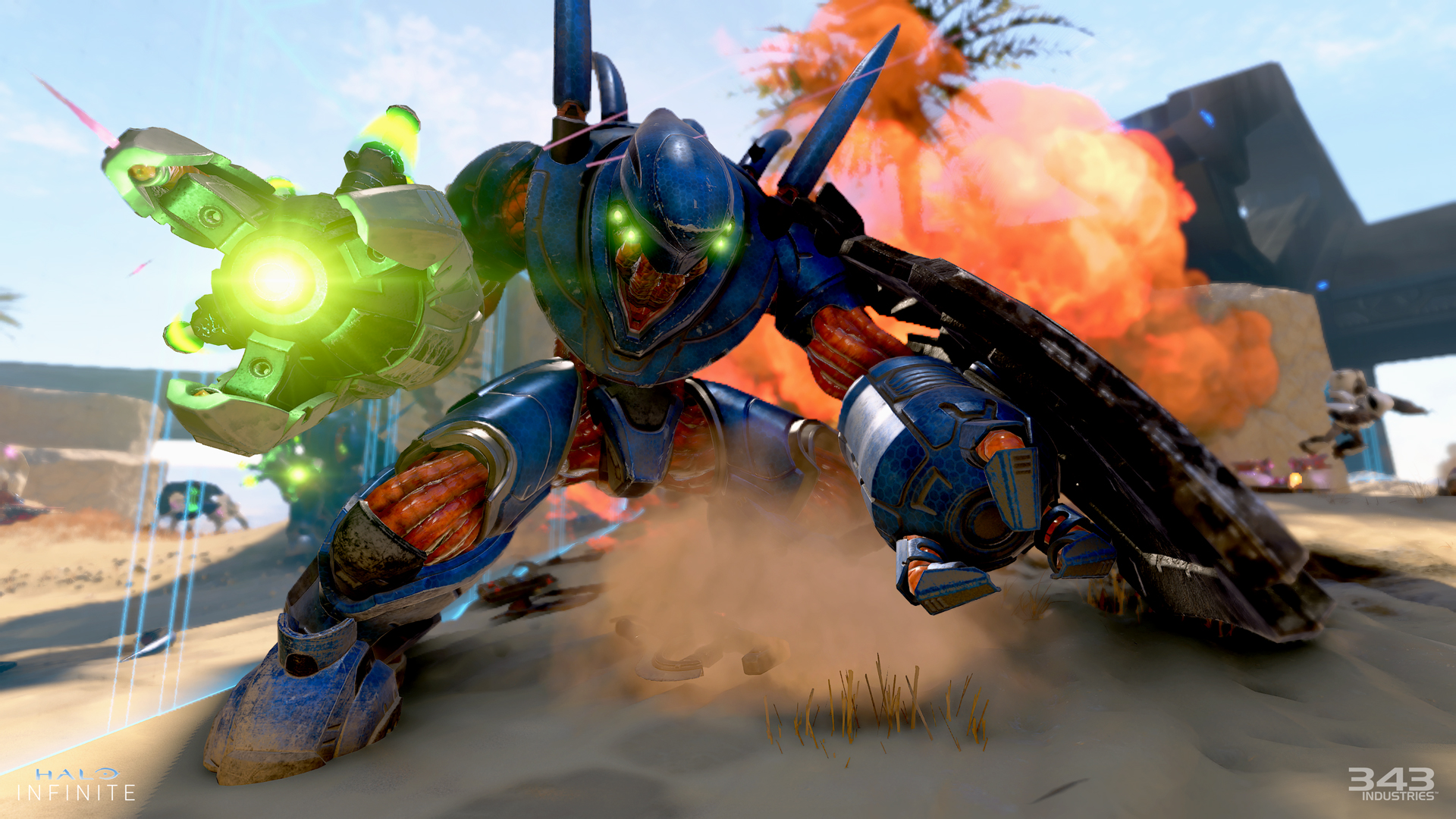
Are there other differences (besides the hill) from survival Firefight or Warzone Firefight?
Yes. The other major departure we made is how Skull difficulty modifiers are earned and enabled throughout the match. In past Firefight, Skulls got enabled in a fixed order. We wanted to make the Skulls a bit more dynamic to adapt to how well a squad is doing in the round.
The rules for Skulls in Firefight: King of the Hill work like this:
- If a team wins a point and nobody dies, one semi-random Skull gets enabled for the next hill.
- Skulls stack over the course of a game. You can have multiple Skulls active if you keep winning points without any fireteam deaths. In matchmaking, the maximum is four active Skulls on the fifth hill.
- Streaks can be dropped. Losing a hill to the Banished will disable your most recently enabled Skull.
We say a “semi-random” Skull gets enabled, because just like the classic modes, you earn easier Skulls before the harder Skulls. For example, the first Skull you earn will always be either Fog or Catch. But if you earn a second Skull, the pool expands to include Famine and Thunderstorm. The result is that fireteams who are able to earn Skulls will get a different experience from match to match, but the difficulty curve will still gradually increase in the same way as the match goes on.
We made this change because when we looked at how people talked about enjoying past Firefight offerings, we noticed two very different types of motivations, and the fixed-order Skull mechanics only catered to one crowd.
One type of player we saw was the challenge hound. They want to be pushed. They want to feel overwhelmed. They want their squad to really go through fire and flame because earned victory is all the sweeter. The fixed-order Skulls gave these players a foe worthy of their blade, since they were guaranteed to run into some satisfyingly brutal Skulls by the end of each round.
We landed on the “streak” nature of the mechanic as something to enhance the experience for these types of players. It feels great to have your Skull streak on the line when the Boss Wave shows up in the fourth hill and you really need to grit your teeth and keep your teammates alive without losing the point.
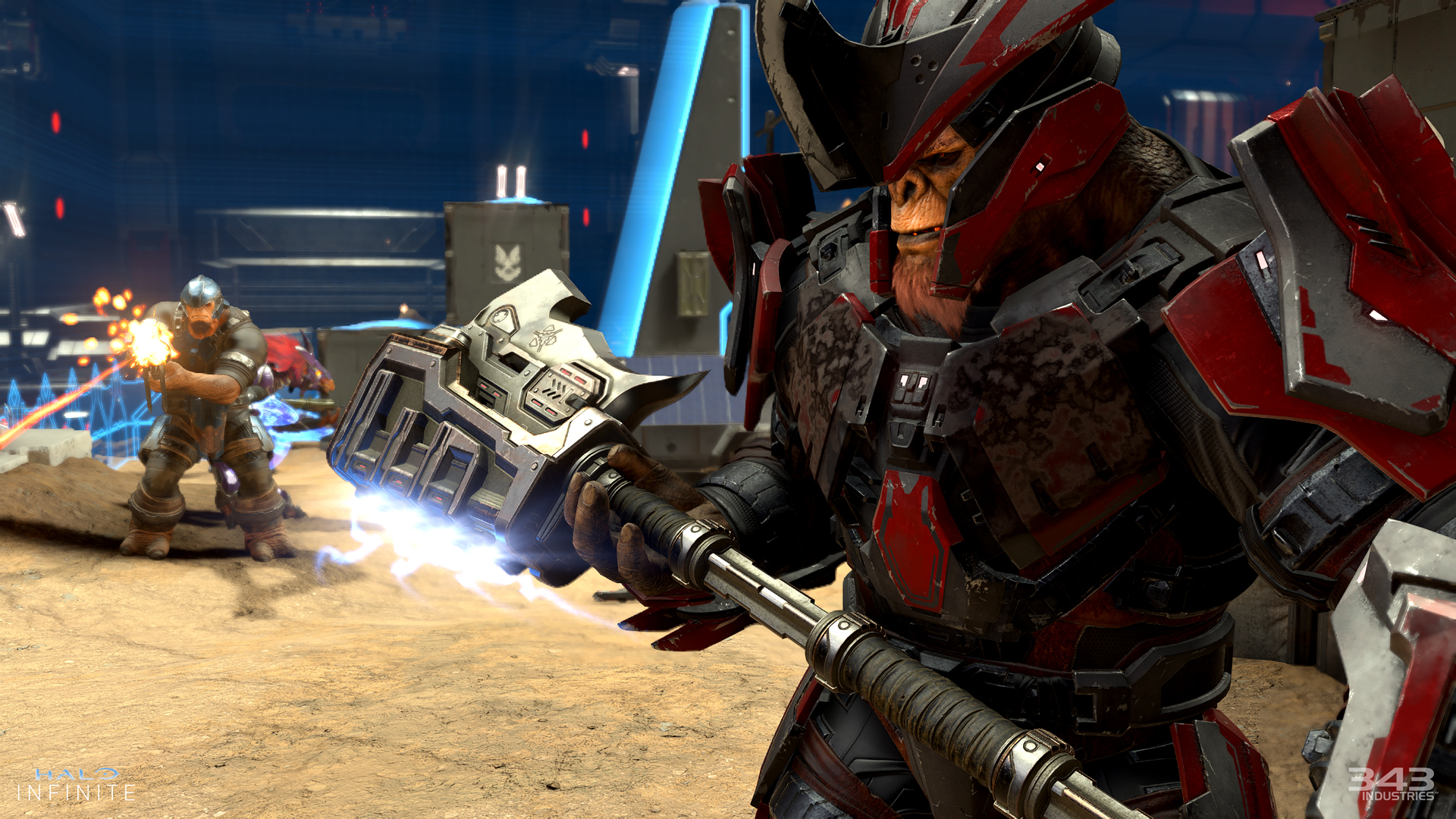
The other type of player we saw plays Firefight for a very different reason. These folks look to Firefight as an escape from the sweat of multiplayer. And while they do not want it to be so easy that it’s boring, they really just want to kick back with their friends and shoot the breeze while they shoot some aliens.
Unavoidable Skulls, especially the tough ones like Black Eye and Blind, cut against this player type. They make you focus 110% on the game by raising the stakes, but that can actually take the focus away from what motivates these players—having a relaxing time with their friends. We landed on the no-death mechanic as a means of keeping Skulls out of the way for these types of players, since players who are just around to goof off will naturally accumulate some deaths in regular gameplay (and therefore won’t encounter Skulls). In this way, the game tries to match whatever energy your lobby is bringing.
Since we saw PvE as a way to build on that “party shooter” vibe that brings people together and makes Halo feel so unique, we wanted to make a change to support this group without sacrificing challenge for the players who wanted it. The goal here is to give players that care about challenge something to strive for as a team, and at the same time to be mostly invisible to players who are just looking for a good time with their friends.
And finally, in the spirit of letting you play Halo the way you want to play—we have Custom Game options that will let you enable those legacy behaviors. You can use the Fixed setting to make the Skulls come on one at a time after each hill regardless of who got the point, and we also have a None setting that will stop the mode from enabling Skulls at all. That last option will let minigame scripters turn on Skulls with whatever logic they want using Node Graph. More on that in the Forge section below.
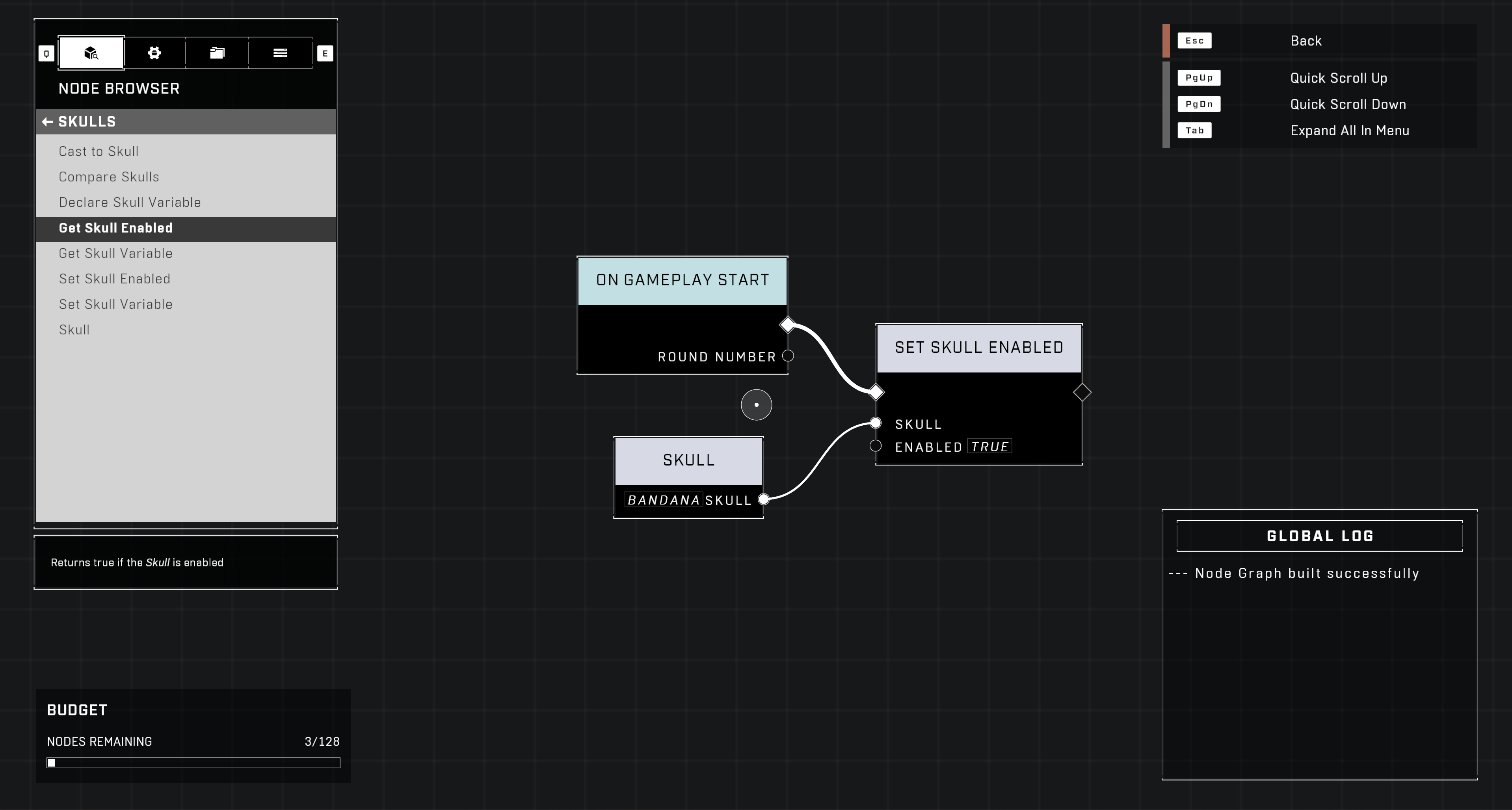
What Skulls are in Firefight: King of the Hill?
The Skulls available in this mode are as follows:
- Fog – disables motion tracker.
- Catch – AI enemies throw and drop more grenades.
- Famine – weapons dropped by AI enemies have half the ammo they normally would.
- Thunderstorm – upgrades the rank of most AI enemies.
- Mythic – AI enemies have significantly increased health.
- Black Eye – your shields only recharge when you melee enemies.
Additionally, there is a (very) small chance you’ll get one of the following Skulls enabled at the start of a round. These Skulls don’t increase the difficulty, but they do make for some fun moments!
- Boom – doubles explosion radius.
- Cowbell – acceleration from explosions is increased.
- Grunt Birthday Party – Grunt headshots lead to glorious celebrations.
- Bandana – grants unlimited ammo and grenades, and removes equipment cooldown.
- IWHBYD – rare combat dialogue becomes more common, and vice versa.
Note: the Blind Skull, which hides first-person HUD elements and view-models, is not in the pool for the mode, but it is available to Custom Games via Node Graph scripting.
TL;DR on the Firefight: KOTH differences from survival Firefight:
- Players get points by capturing a hill and killing the Boss Wave for that hill, not just surviving.
- If the Spartans fail to hold the hill, the Banished will capture it instead.
- No more shared lifepool; You have only one life, but your teammates can revive you like in Attrition. All Spartans downed at the same time will end the round instantly.
- You can use Custom Game options to get classic Lifepool settings.
- Players earn Skulls by winning hills without dying, and Skulls stack.
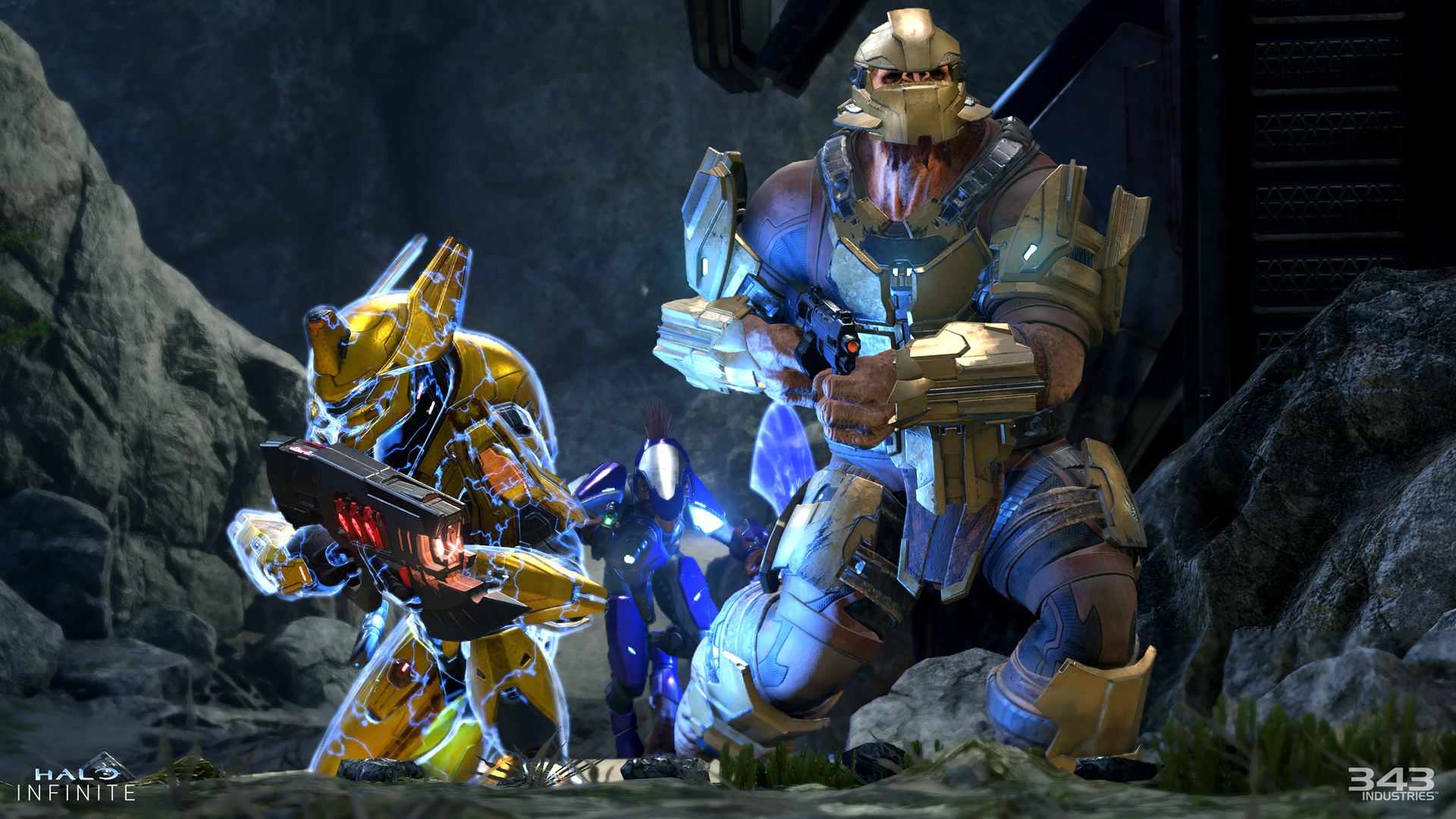
How will Firefight: King of the Hill help me progress my Operation or Battle Pass?
In Matchmaking, you’ll get a small amount of Match XP just for playing. Additionally, you’ll get bonus XP for a win, which is capturing 3 of the 5 hills. Successfully capturing the fourth and fifth hill will each give an additional XP bonus.
Slaying Banished foes will award Personal Score throughout the entire round that will level up your Career Rank, and Skulls will also net players a stacking Personal Score bonus at the end of each round won for every Skull that is enabled.
What maps will I be able to play at launch?
We have nine maps available when Firefight: King of the Hill launches with the December 2023 Update, which includes three community-made maps, five existing developer-made maps, and the new House of Reckoning map from Halo Infinite’s campaign.
The nine maps featured in the Firefight: King of the Hill playlist are:
- House of Reckoning
- Behemoth
- Deadlock
- Launch Site
- Live Fire
- Oasis
- Exiled (by Epetr0, SandoChokUN)
- Kusini Bay (by Mr Kwatz)
- Vallaheim (by HaiseOz)
What kind of Custom Game options are available?
We’ve mentioned some of the levers you can pull in Custom Games to change your Firefight: KOTH experience to suit your taste. We wanted to offer up a wealth of options to feed your Custom Game Browser nights and let you play Halo the way you want to play. You can decide what elements of the mode will be active; you can change how Lives, Revives, and Skulls are used; you can tweak hill capture timers, and even override which units spawn in each wave.
Here are screencaps of the many Custom Game options you’ll get your hands on at launch!
And for the Forgers out there, you’ll find that Firefight: KOTH is the most integrated with Forge and Node Graph scripting yet. You can set the mode to use the enemy definitions straight from your spawners and make the hills spawn in the fixed order, paving the way for linear, wave-based missions.
The Skulls we converted to multiplayer are also available through Node Graph to use in any game mode. And the AI Wave Manager nodes that we were able to get to players early with the launch of Season 5 is the same one we built for Firefight: KOTH. That means you’ll be able to hook into mode events to run custom logic when waves start or end.
For example, using the new Wave Type output pin, this sample script would run any time the mode starts a Boss Wave. Then it would pick two random units and send every Grunt in their squad into an explosive frenzy.
We can’t wait to see what horrors and delights you’ll inflict on all of us in the Custom Game Browser come launch!
In the meantime–
[*Phantom horn sound*]
Here we go! Next wave’s coming in. Get set, Spartans. This is gonna get hot!

